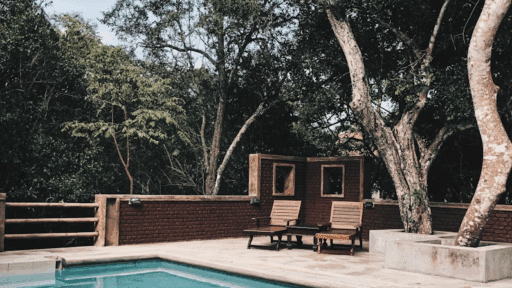In today’s modern world, living in small spaces is becoming increasingly common, whether it’s due to urbanization or the rising costs of larger homes. But living in a compact room doesn’t have to mean sacrificing comfort or style. By employing smart design principles and creative solutions, you can turn even the smallest space into a cozy, functional haven. One of the first things to consider when optimizing your space is finding furniture and decor that make the most of what you have, without cluttering your room. Twin size options for space efficiency can make a huge difference when looking to maximize comfort and minimize space usage.
1. Choosing the Right Furniture for Small Spaces
The key to making a small room comfortable is selecting furniture that serves more than one purpose. Multipurpose furniture, like sofa beds or storage ottomans, is ideal for small spaces. A sofa bed can double as both a seating area and a bed, saving you space without sacrificing comfort. Storage ottomans offer a place to rest your feet while also providing valuable storage space for books, blankets, or other small items. Look for pieces that fit your room’s size and aesthetic while also serving functional purposes.
For bedrooms, twin size options for space efficiency are perfect, especially for guest rooms or studios. A twin bed allows you to have a comfortable sleeping space without taking up too much room, leaving more space for other furniture or activities. Additionally, look for beds with built-in storage underneath, such as drawers or lofted designs that free up floor space for other uses.
2. Maximizing Vertical Space
When floor space is limited, don’t forget to look up! Walls provide a wealth of opportunities for organizing and maximizing storage in small rooms. Wall-mounted shelves are a great way to store books, plants, or decor without using up valuable floor space. Consider floating nightstands, desks, or other essentials to add functionality without overwhelming the room.
Another way to make use of vertical space is to incorporate tall furniture. Tall bookcases, wardrobes, and cabinets draw the eye upward and help the room feel more expansive. The added bonus is that these pieces often provide ample storage, keeping the room organized and free of clutter.
3. Light Colors and Mirrors to Create Illusion of Space
One of the simplest tricks for making a small room feel larger and more open is using light colors. White, light gray, pastel shades, and soft neutrals reflect light, making the space feel airy and expansive. Dark colors, on the other hand, can make a small room feel even smaller and more enclosed. If you love bolder colors, consider using them in accents like throw pillows, rugs, or artwork.
In addition to color, mirrors are another great tool for creating the illusion of more space. Mirrors reflect light and visually expand the room. Consider placing a large mirror on one wall or using mirrored furniture to amplify the sense of openness. When positioned strategically, mirrors can make the room feel larger and brighter.
4. Furniture with Storage: The Key to Clutter-Free Living
One of the biggest challenges of small living spaces is managing clutter. To keep your room organized, opt for furniture pieces that offer built-in storage solutions. For example, a bed with storage drawers or a coffee table with hidden compartments can help you keep items out of sight while still being easily accessible.
Another great option is wall-mounted storage units, which don’t take up any floor space but still offer a way to store or display your belongings. For the kitchen or dining area, look for multi-functional tables that can expand or have hidden compartments for storing kitchen tools, dishes, and utensils.
5. Incorporating Smart Lighting Solutions
Lighting plays a vital role in setting the tone and feel of any room, and this is particularly important in small spaces. Bright, well-placed lighting can make a compact room feel larger and more inviting. Instead of relying solely on overhead lighting, use layered lighting to create depth and warmth in the room. A mix of task, ambient, and accent lighting can help balance the space, highlighting different areas without making the room feel cramped.
Wall sconces, pendant lights, or table lamps are great alternatives to traditional overhead lights and help save precious floor space. Also, consider using dimmable lights so you can adjust the ambiance based on your needs, whether it’s for reading, relaxing, or entertaining guests.
6. Declutter and Minimize Accessories
It’s easy to think that adding decorative items will make a small room more stylish, but in reality, too many accessories can make the space feel crowded. In a compact room, every item should serve a purpose, either functionally or aesthetically. Keep your decor minimal by choosing a few key pieces that make a statement rather than cluttering the room with too many small items.
Use storage baskets, decorative boxes, or trays to keep smaller items organized and hidden from view. A clean, clutter-free room is key to maintaining a sense of openness and comfort in a small space. Remember, less is more when it comes to decorating small spaces.
7. Opt for Multi-Functional Rooms
When space is at a premium, it’s important to think of each room as a flexible, multifunctional space. For example, a living room can double as a home office or a guest bedroom. Consider adding a foldable desk or a wall-mounted drop-leaf table that can be easily tucked away when not in use.
In a small studio apartment, partitioning the space can create a sense of separation between the living area and sleeping area. Sliding doors, curtains, or room dividers allow you to create distinct zones without sacrificing the overall open feel of the room.
8. Personalize with Style
Even the smallest of spaces can feel personal and inviting. Add warmth and character through carefully chosen textiles, artwork, and accessories that reflect your taste. Opt for compact furniture pieces with bold colors or unique designs to create focal points in the room.
Textiles, such as throws, cushions, and rugs, can soften a room and make it feel cozy. Don’t be afraid to play with textures, such as velvet cushions or silk curtains, to add depth and interest to the space. Even in a small room, personalized decor can transform the space and make it feel like home.
9. Use Area Rugs to Define Spaces
In a small room, area rugs can help define different zones, especially if you’re trying to separate areas within a multi-functional room. For instance, in a combined living and dining space, an area rug can help distinguish between the two areas while still keeping the space cohesive. Choose rugs that are appropriately sized for your room; oversized rugs can overwhelm a small space, while smaller rugs can help balance the room and add texture.
10. Bring the Outdoors In
Finally, consider bringing some greenery into your small space. Plants are a great way to add life and vibrancy without taking up much room. Smaller potted plants or hanging planters can add a touch of nature without cluttering your space. Additionally, plants can help purify the air and create a calming atmosphere.
Living in a small space doesn’t mean you have to compromise on comfort or style. By using creative design strategies, investing in smart furniture, and optimizing your layout, you can transform even the tiniest room into a comfortable, functional haven. Whether you’re working with a tiny studio apartment or just a small bedroom, there are countless ways to maximize your space and make the most of every square inch.








